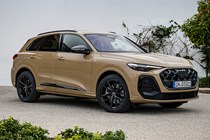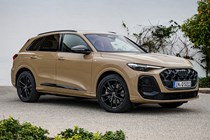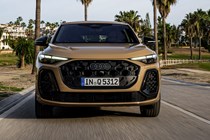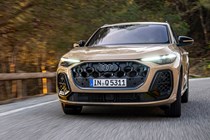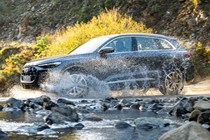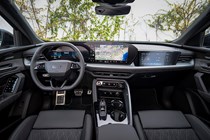Audi Q5 engines, drive and performance
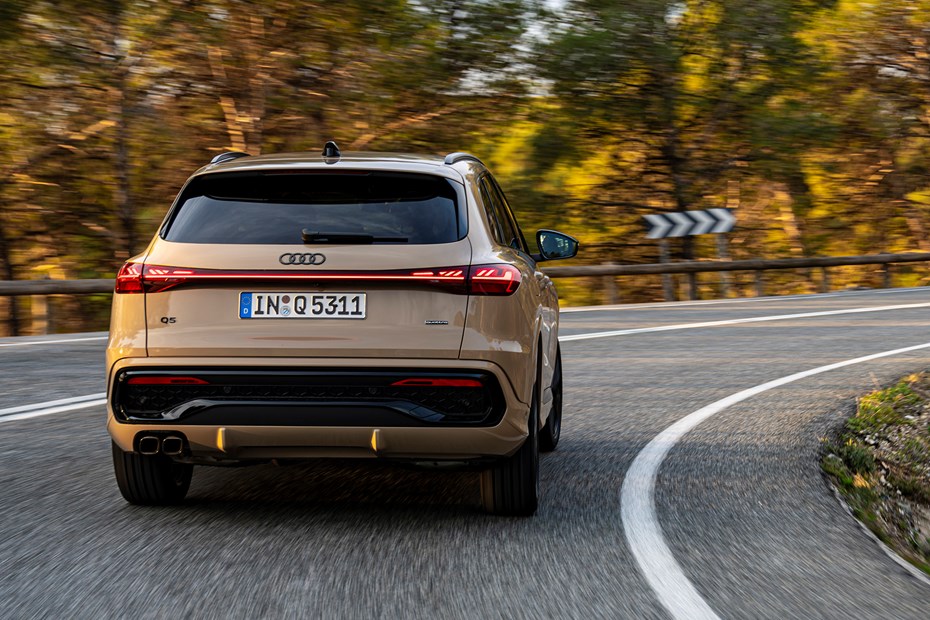
- Simple engine choices
- Diesel version feels more flexible
- All engines have clever mild hybrid tech
Petrol engines
Audi provides one ‘normal’ petrol engine for the Q5: a 2.0-litre unit that makes 204hp. The petrol version, labelled as TFSI in Audi speak, sprints to 62mph in 7.2 seconds and reaches a top speed of 140mph. It’s only available as a Quattro all-wheel drive version with a seven-speed automatic gearbox. The engine itself is a perfectly fine performer, with smooth acceleration and slick shifts when changing gears. At low speeds the engine is quiet, but when it revs it’s quite a harsh and raspy noise that doesn’t sound all that refined.
Your other petrol option is the SQ5 from Audi Sport. This is a high-performance version that comes with a 3.0-litre twin-turbo V6 that develops 367hp, enabling the SQ5 to sprint from 0-62mph in a very speedy 4.5 seconds and on to a limited top speed of 155mph.
This is an impressive engine, and one that’s very flexible and smooth when accelerating. It can be well behaved when in normal drive modes, remaining as quiet when driving through town or at a motorway cruise as the rest of the engine range, but it comes alive in the SQ5’s Dynamic mode. This makes the SQ5 an impressive performance SUV in terms of outright pace, even if there are sharper alternatives for the car enthusiast.
Both petrol engines are equipped with Audi’s MHEV Plus engine technology. It effectively makes the Q5 a strong mild hybrid, allowing for engine-off low-speed driving while parking or in traffic, and cuts the engine off when coasting. Overall, the engineering is designed to both save fuel and provide extra power.
Diesel engines
Conveniently enough, the Q5’s TDI diesel engine is also 2.0 litres in size, also provides 204hp and also has quattro all-wheel drive and a seven-speed automatic transmission. For the diesel model, the Q5 accelerates to 62mph in an almost imperceptively slower 7.4 seconds and still tops out at 140mph. The TDI also features that MHEV Plus technology to help improve efficiency.
We’d argue that this is the better engine of the pair offered at launch. While the diesel engine still emits a noise that’s very familiar to existing diesel owners, it’s just as quiet as the petrol at cruising speeds and sounds less harsh when revved further. The automatic transmission also feels a little more responsive here, changing gears sooner and accelerating quicker at middling speeds.
Plug-in hybrid engines
Audi has confirmed that plug-in hybrid versions of the Q5 will join the range in the summer of 2025. The brand says that two power variants will be offered, though it’s not confirmed whether both of these options will make it to the UK.
What’s it like to drive?
- Smooth and quiet on the road
- Solid, dependable handling
- We’ve only tested air suspension models so far
Overall, the Q5 is a competent and comfortable car designed to take a lot of the aggro out of driving. The steering feels fluid and is well weighted, and the car’s driving position is adjustable. It’s not all that exciting to drive, but the whole experience feels smooth and well thought out.
The brake pedal is notable as it feels rather firm and alert, which took a little while to get used to but becomes fluid and welcome very quickly – particularly when so many cars have soggy brake pedals when they need to balance physical braking with energy regeneration. As for overall ambience inside, the Q5 features a windscreen with extra soundproofing, and reasonably well controlled.
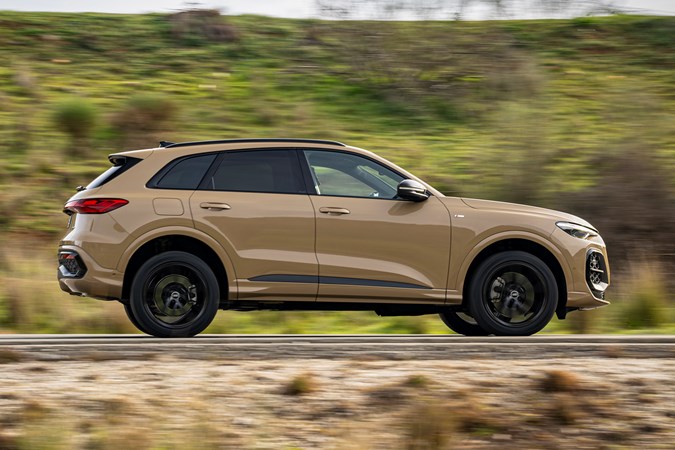
Unfortunately, due to the constraints of the cars available during our initial testing of the new Q5, every version we’ve driven so far had air adaptive suspension equipped – an option for Q5 buyers that’ll set you back £1,725 more when ordering your car. You’ll have to wait until we get Q5 models in the UK on standard suspension for a more varied road test.
For now, though, we can say that the air suspension feels like a good upgrade to make. The ride height raises and lowers depending on drive mode while you’re on the move, and it manages to smooth off plenty of larger lumps and bumps. While there is a bit of body roll from side to side, the air suspension is remarkably composed; it doesn’t wallow or float over large undulations in the road surface.


